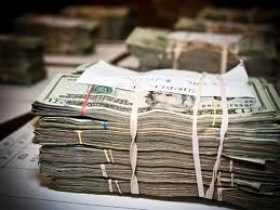Mexico’s Ministry of Finance says organized crime may have laundered up to $10 billion last year, much of it profits from drug trafficking. But understanding the size of the problem also means recognizing the inherent difficulties in fighting money laundering.
The Ministry provided the figures in a new report, “Money Laundering: Binational Indicators and Actions,” released by Mexico’s lower house of Congress, which calculates the overall size of laundered profits for different criminal activities. According to the Ministry, drug trafficking accounts for 41 percent of the laundered proceeds, while human trafficking and human smuggling accounts for 33 percent, piracy for 20 percent, and fraud for six percent.
There is a wide range of legislation meant to cover money laundering, including 16 laws, but little real enforcement, the report noted. The most recent bill passed in April 11, and sets penalties of up to 16 years in prison for failing to report illegal acts of money laundering to the Ministry of Finance. However, according to the report, only two percent of money laundering investigations in 2010 ended with the accused being sentenced.
US agencies coincide with the assessment that the drug trade is probably responsible for the largest amount of Mexico’s laundered proceeds, although estimates vary widely. According to the Drug Enforcement Administration (DEA), drug sales see up to $22 billion flow from the US into Mexico annually. The Department of Homeland Security has reported that an annual $19 billion to $29 billion of illicit profits flow from the US directly to Mexican drug cartels and other criminal groups, while the US State Department estimates that drug cartels launder between $8 billion and $25 billion from the US annually.
Despite expanding anti-money laundering legislation in Mexico and efforts by Congress to track the issue more carefully, as seen with this most recent report, there are a few reasons why it remains difficult for anti-crime forces to target the money. The first problem is that these illicit financial transactions can go easily undetected in the shadow of Mexico’s $1 trillion annual GDP. Some estimates have said that drug trafficking accounts for 3.6 percent to 5 percent of Mexico’s total GDP, but this is still a relative fraction of Mexico’s total economy.
Secondly, Mexico’s large informal economy, estimated by the International Monetary Fund (IMF) at almost 30 percent of the total GDP, affords drug traders a virtually untraceable haven in which to hide illegal proceeds. To cite just one 2009 study by economists Friedrich Schneider and Andreas Buehn, proceeds from criminal activity in Mexico are distributed between the formal and informal economies at 76 percent and 24 percent, respectively.
Finally, expanding trade between Mexico and the US has opened an avenue for drug cartels to pass illicit cash across the border. In the same way that relatively minuscule drug money transactions can fly under the radar within Mexico’s tremendous economy, so can illicit proceeds of tens of thousands of dollars at a time quietly reach Mexican drug traders from the US within the cushion of both nations’ $400 billion in annual shared trade. According to a recent study by research and advocacy organization Global Financial Integrity, illicit cash flows increased from about 4.5 percent of Mexico’s GDP to 6.3, after the enactment of the North American Free Trade Agreement (NAFTA) in 1994.
Fighting money laundering does not seem to come easily to any government. US-based Wachovia laundered an estimated $420 billion of the Sinaloa Cartel’s revenue. But it is encouraging that Mexico’s Congress and Ministry of Finance took another step towards fully understanding the true magnitude of the drug trade’s laundered proceeds with its new study. Given that money laundering is so inherently difficult to fight, however, assessing the size of the problem is only the first stage of the battle.

